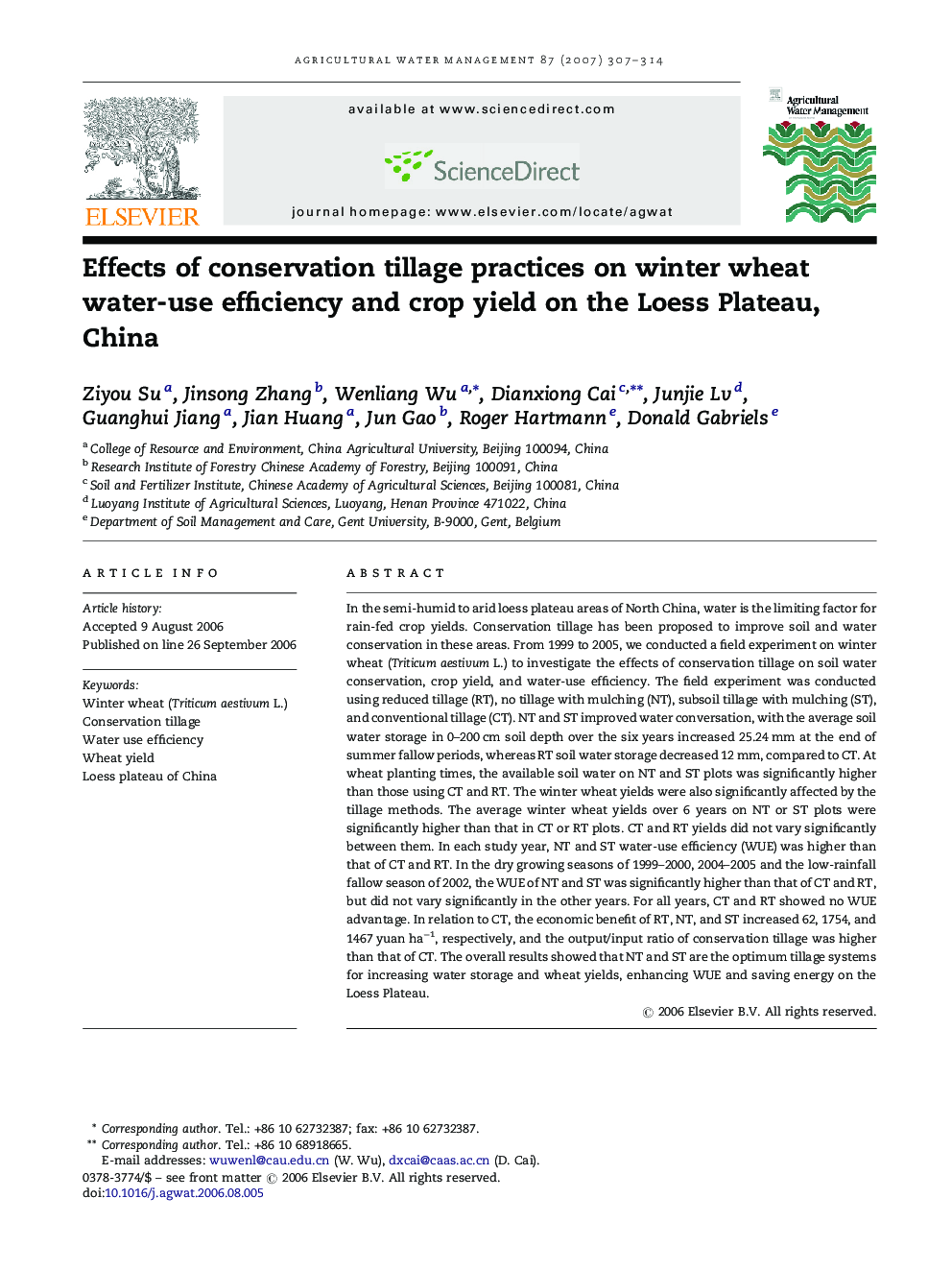| کد مقاله | کد نشریه | سال انتشار | مقاله انگلیسی | نسخه تمام متن |
|---|---|---|---|---|
| 4480442 | 1316494 | 2007 | 8 صفحه PDF | دانلود رایگان |

In the semi-humid to arid loess plateau areas of North China, water is the limiting factor for rain-fed crop yields. Conservation tillage has been proposed to improve soil and water conservation in these areas. From 1999 to 2005, we conducted a field experiment on winter wheat (Triticum aestivum L.) to investigate the effects of conservation tillage on soil water conservation, crop yield, and water-use efficiency. The field experiment was conducted using reduced tillage (RT), no tillage with mulching (NT), subsoil tillage with mulching (ST), and conventional tillage (CT). NT and ST improved water conversation, with the average soil water storage in 0–200 cm soil depth over the six years increased 25.24 mm at the end of summer fallow periods, whereas RT soil water storage decreased 12 mm, compared to CT. At wheat planting times, the available soil water on NT and ST plots was significantly higher than those using CT and RT. The winter wheat yields were also significantly affected by the tillage methods. The average winter wheat yields over 6 years on NT or ST plots were significantly higher than that in CT or RT plots. CT and RT yields did not vary significantly between them. In each study year, NT and ST water-use efficiency (WUE) was higher than that of CT and RT. In the dry growing seasons of 1999–2000, 2004–2005 and the low-rainfall fallow season of 2002, the WUE of NT and ST was significantly higher than that of CT and RT, but did not vary significantly in the other years. For all years, CT and RT showed no WUE advantage. In relation to CT, the economic benefit of RT, NT, and ST increased 62, 1754, and 1467 yuan ha−1, respectively, and the output/input ratio of conservation tillage was higher than that of CT. The overall results showed that NT and ST are the optimum tillage systems for increasing water storage and wheat yields, enhancing WUE and saving energy on the Loess Plateau.
Journal: Agricultural Water Management - Volume 87, Issue 3, 16 February 2007, Pages 307–314